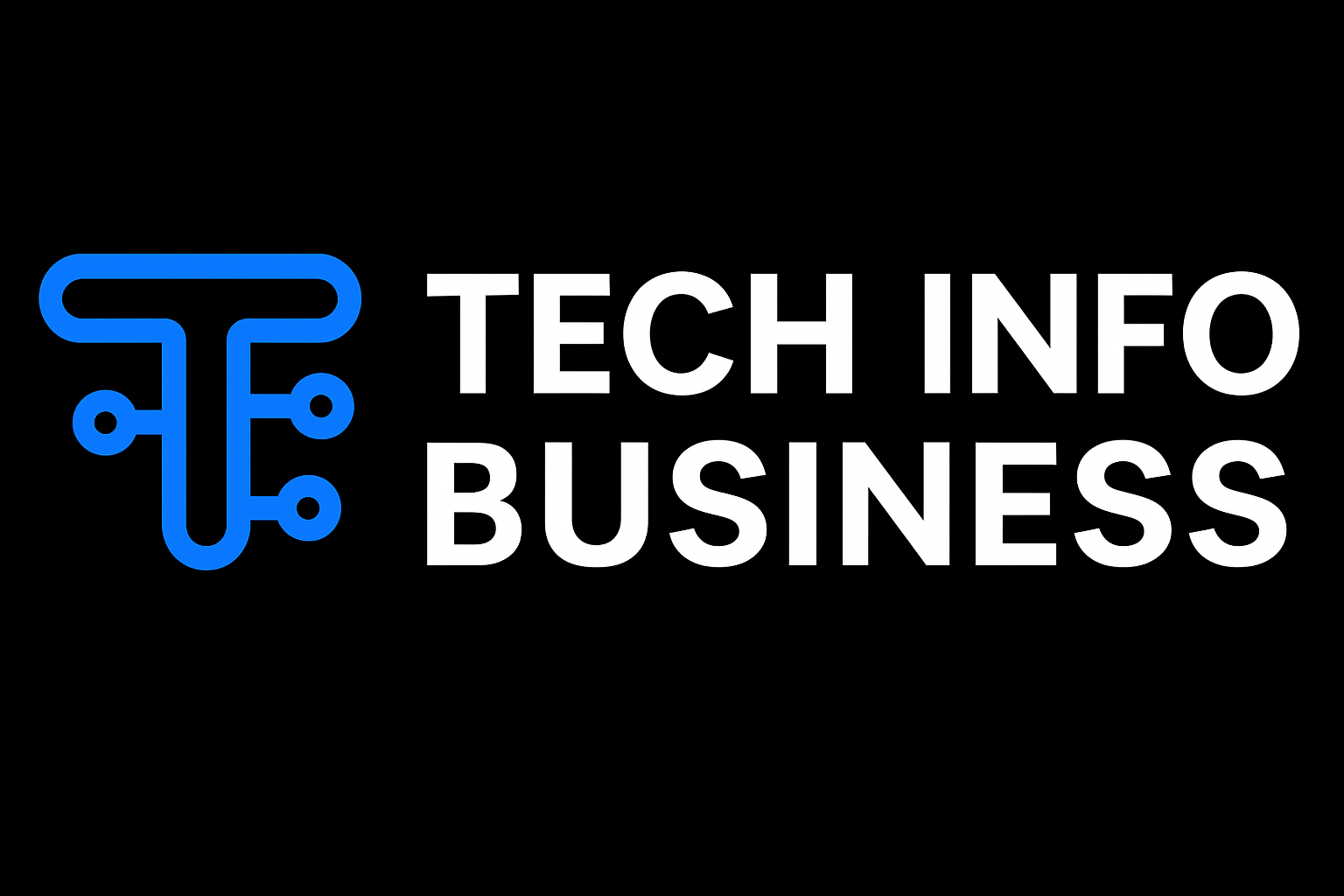In 2025, automation is no longer a luxury — it’s a competitive necessity. From reducing repetitive manual tasks to improving accuracy and decision-making, businesses are turning to automation to streamline workflows and drive measurable efficiency. Whether you run a small enterprise or manage operations for a global corporation, the right automation tools can save time, cut costs, and boost productivity across every department.
In this article, we explore the best automation tools for business efficiency in 2025, covering process automation, AI-driven productivity platforms, and intelligent workflow management systems that help organizations perform smarter and faster.
Why Automation Is Key to Business Growth
Automation transforms the way businesses function. By allowing software to handle repetitive and rule-based tasks, employees can focus on high-value work such as strategy, creativity, and innovation.
Key benefits include:
- Reduced human error through consistent and accurate process execution.
- Lower operational costs by eliminating redundant manual work.
- Enhanced productivity with faster, data-driven decision-making.
- Seamless collaboration between departments through integrated workflows.
Let’s now look at the top automation solutions that are revolutionizing business operations in 2025.
1. Claromentis – The All-in-One Digital Workplace
Claromentis is a fully integrated digital workplace platform offering everything from process automation to project management and e-learning. Its automation tool, InfoCapture, enables organizations to design, manage, and optimize complex workflows without writing a single line of code.
Key Features:
- No-code form builder and customizable templates
- Automated triggers and SLAs
- Process analytics and version control
- REST API and Single Sign-On (SSO) support
Why It’s Great for Efficiency:
Claromentis unifies multiple workplace tools under one roof, eliminating the need to manage multiple vendors. It’s particularly ideal for mid-sized and enterprise businesses looking for long-term scalability.
2. UiPath – Leading Robotic Process Automation (RPA)
UiPath continues to be a global leader in robotic process automation, helping companies identify repetitive tasks, automate them, and track performance using analytics.
Highlights:
- Advanced AI integration for complex workflows
- Strong community and learning resources
- Enterprise-grade scalability
UiPath is best for businesses that want to combine RPA with artificial intelligence to enhance speed, accuracy, and compliance in day-to-day operations.
3. Automation Anywhere – Cloud-Native RPA Power
Automation Anywhere offers an AI-powered, cloud-native automation platform that allows organizations to automate processes at scale. It’s well-suited for large enterprises seeking deep automation coverage.
Strengths:
- Intelligent process discovery
- Scalable architecture for large operations
- Extensive integration with third-party apps
While it requires some technical setup, its impact on long-term efficiency is substantial.
4. Microsoft Power Automate – For Microsoft Ecosystem Users
Microsoft Power Automate is part of the Power Platform, enabling users to connect their Microsoft tools (Excel, SharePoint, Outlook) with automation flows.
Why It Stands Out:
- Simple drag-and-drop workflow builder
- Library of pre-built templates
- Tight integration with Microsoft 365
It’s a top pick for companies already using Microsoft products and seeking faster internal process automation.
5. Zapier – Simple Yet Powerful Workflow Connector
Zapier is one of the most popular no-code workflow automation tools, perfect for small to mid-sized businesses. It connects thousands of web apps — from Gmail and Slack to Trello and HubSpot — enabling quick task automation.
Benefits:
- Easy setup and use
- Thousands of pre-built app integrations
- Ideal for marketing, sales, and admin workflows
Zapier’s simplicity and vast ecosystem make it a go-to for teams that want to eliminate repetitive tasks without involving developers.
6. Kissflow – No-Code Platform for Teams
Kissflow offers no-code automation and app development features designed for both technical and non-technical teams.
Advantages:
- User-friendly interface
- Great for workflow automation and approvals
- Works well for HR, procurement, and finance teams
It’s best for organizations seeking a balance between simplicity and flexibility.
7. Appian – Intelligent Process Automation
Appian combines AI, RPA, and low-code development in one platform. It allows enterprises to design and implement automation rapidly while maintaining data security and compliance.
Efficiency Factors:
- Fast app deployment
- Real-time analytics
- Integration with existing systems
Appian is particularly valuable for large enterprises managing high volumes of data and complex business processes.
8. Process Street – Streamlined Workflow Management
Process Street turns recurring tasks into dynamic, no-code workflows. It’s ideal for teams managing checklists, SOPs, and recurring processes.
Key Benefits:
- Simple user experience
- Task reminders and notifications
- Perfect for onboarding and operations teams
It brings structure and accountability to team operations, boosting overall efficiency.
9. Nintex Process Platform – Scalable Automation
Nintex offers a comprehensive automation platform that supports workflow automation, document generation, and e-signature processes.
Top Features:
- AI-powered process mapping
- Integration with Microsoft and Salesforce
- Drag-and-drop designer
Nintex is powerful for large organizations needing customizable automation at scale.
10. Blue Prism – Enterprise-Grade Intelligent Automation
SS&C Blue Prism delivers enterprise-class intelligent automation backed by AI. It’s designed for organizations with heavy workloads and compliance needs.
Highlights:
- High scalability and security
- Strong process analytics
- Suitable for banking, healthcare, and manufacturing
While setup takes time, its long-term efficiency benefits are undeniable.
11. Creatio – CRM-Driven Automation
Creatio combines process automation with customer relationship management (CRM). It helps businesses design and optimize workflows while automating marketing and sales processes.
Pros:
- Highly customizable workflows
- Great training resources
- Excellent for customer-facing teams
Creatio is best for companies wanting to automate both internal and customer-centric operations.
12. Comidor – Unified BPA and RPA Platform
Comidor brings business process automation, RPA, and low-code app building together. It’s ideal for digital transformation initiatives.
Efficiency Highlights:
- Rapid app development
- AI-powered workflow suggestions
- Centralized data and reporting
It enables enterprises to modernize operations quickly and efficiently.
13. Zapier AI and Emerging Productivity Tools
Beyond traditional automation, AI tools like ChatGPT, Jasper, Perplexity, Runway, and Grammarly are now part of the modern automation ecosystem. They accelerate writing, design, and customer communication while integrating seamlessly with workflow tools like Zapier and Notion.
These AI productivity tools boost efficiency by:
- Generating content instantly for marketing and communication
- Analyzing data for quick insights
- Automating creative tasks such as video editing and graphic design
AI-driven automation will continue to shape business efficiency throughout 2025 and beyond.
Choosing the Right Automation Tool
When evaluating automation tools, consider these factors:
- Ease of use: Can non-technical teams use it effectively?
- Integration: Does it connect with your existing software ecosystem?
- Scalability: Will it grow with your organization?
- Cost and ROI: Does it offer measurable value over time?
By focusing on these criteria, businesses can identify best automation tools for business efficiency that not only automate tasks but also enhance overall performance.
Final Thoughts
The best automation tools for business efficiency in 2025 go far beyond simple task automation. They connect people, data, and systems, creating smarter workflows that drive measurable outcomes. Whether you prefer all-in-one platforms like Claromentis and Appian, lightweight options like Zapier and Process Street, or AI-powered solutions such as UiPath and Automation Anywhere, each plays a vital role in shaping a more efficient digital future.
Automation isn’t just about saving time — it’s about transforming the way businesses operate, innovate, and succeed in the modern world.
Consider Also:https://techinfobusiness.co.uk/best-tools-for-android-and-ios-app-development/
FAQs
1. What are automation tools for business efficiency?
Automation tools help businesses streamline repetitive processes, minimize manual work, and enhance overall productivity through software-driven workflows.
2. Which is the best automation software for enterprises?
Claromentis, UiPath, and Blue Prism are among the top enterprise-level automation platforms due to their scalability and AI capabilities.
3. Are no-code automation tools effective for small businesses?
Yes. Tools like Zapier and Kissflow are perfect for small businesses that need to automate workflows without hiring developers.
4. How do AI tools improve business efficiency?
AI tools enhance decision-making, automate creative and analytical tasks, and integrate with existing automation platforms for smarter operations.
5. What factors should I consider before choosing automation software?
Consider ease of use, integration capabilities, pricing, scalability, and customer support before selecting an automation tool.


